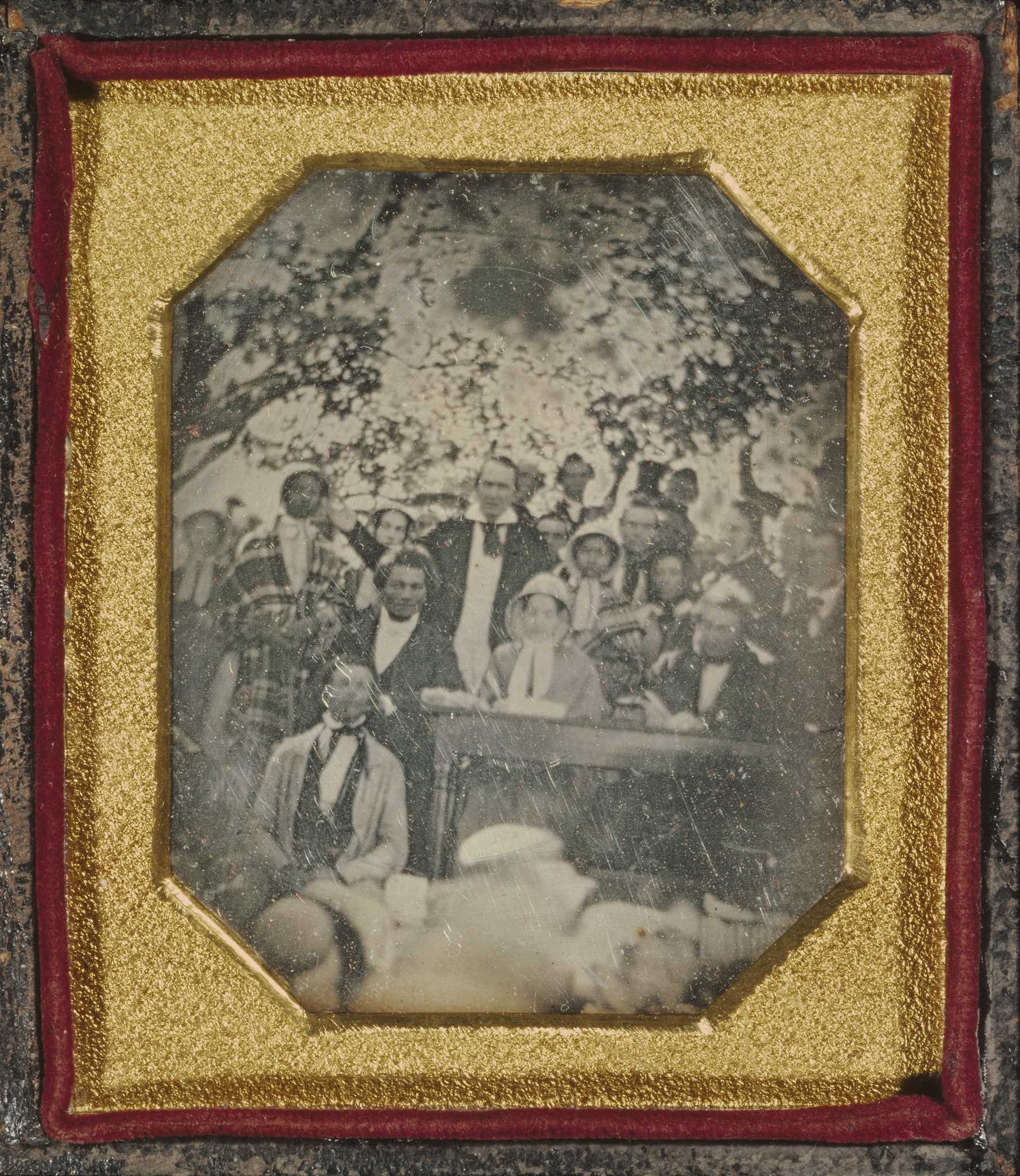Chapter 2
Anti-Slavery in Black & White
In the 1820s African American and white abolitionists began working together to pressure Americans to confront the brutal realities of slavery. Alarmed by the rapid expansion of slavery beyond the Mississippi River, they forged new and unexpected relationships that defied the color line building the abolitionist movement. They carried their concerns to the public arena, declaring freedom for all. They marketed their movement including creating abolitionist papers, publications, logos and promotional products. Within the movement the end of slavery was the call of the day, yet tension regarding Black equality was also present.
As the abolitionist movement gained momentum its successes sparked violent anti-abolitionist backlash, and racism soaked into popular culture, political campaigns, and scientific thought. The result was that no American could avoid the issue of slavery and race.
Crossing Boundaries
Cazenovia Convention
Abolitionists, whether Black or white, disagreed on the best tactics for defeating slavery and the question of what freedom would mean for African Americans. Some grew close and became radical models for interracial cooperation and friendship, like Frederick Douglass and reformer Gerrit Smith. Others, like Lydia Maria Child and Harriet Jacobs, coped with the strain of collaboration. Challenging slavery meant testing the boundaries of solidarity. Douglass dedicated his book to Gerrit Smith, a dear friend and political ally devoted to equal rights.
Gerrit Smith & Frederick Douglass
My Bondage and My Freedom, by Frederick Douglass, 1855
Through their shared interest in ending slavery, Gerrit Smith and Frederick Douglass developed a close friendship that spanned decades. At first glance, the two seemed unlikely allies. Smith worked within the political system and even served in Congress because he felt that the U.S. Constitution promised equal rights regardless of race.
Promoting Black Landownership
Gerrit Smith
Gerrit Smith understood that economic autonomy was crucial to claiming equal rights. The abolitionist distributed 40-acre land grants to free people of color. Smith was also one of the wealthiest men in the country. In contrast, Douglass was a self-liberated, formerly enslaved Black man. Their unorthodox relationship served as a model for equality, and their personal letters remain one of the largest surviving interracial correspondences from the period.
Joseph Cinquez & John Quincy Adams
Joseph Cinquez
Joseph Cinquez was the daring leader of the Amistad slave ship rebellion in 1839. He and other enslaved people took hold of the ship, but eventually were arrested and charged with murder. Sengbe Pieh (or Cinquez) was from the western African Mende people. Awaiting his trial, he declared, "It is better to die than to be a white man's slave."
John Quincy Adams
Former President John Quincy Adams represented the Africans before the Supreme Court and won an acquittal. Adams argued that the Amistad uprising was legally justified because, “These Negroes were free and had a right to assert their liberty.” However, he was not a radical abolitionist and did not think Cinquez his equal.
Fighting Change
Violence Against Abolitionists, 1835
Americans fought the antislavery movement. Southern post offices refused to deliver abolitionist pamphlets, and southern states created their own universities to avoid sending white children to northern schools. In the North and Midwest, mobs attacked abolitionists, murdering journalist Elijah Lovejoy and hanging a noose around the neck of abolitionist William Lloyd Garrison. In 1835 a violent mob attacked an antislavery rally. Unable to find George Thompson, the mob attacked William Lloyd Garrison, who barely escaped alive. Most Americans clung to a belief in Black inferiority and feared living among African Americans as equals.
Harriet Jacobs & Lydia Maria Child
Harriet Jacobs
Lydia Maria Child
Harriet Jacobs escaped from slavery and wrote the groundbreaking autobiographical novel "Incidents in the Life of a Slave Girl." The sexual abuse of enslaved women was considered a taboo subject in the mid-1800s, but Jacobs bravely published her story anyway. Lydia Maria Child, an outspoken white abolitionist and author of "An Appeal in Favor of That Class of Americans Called Africans," agreed to edit the manuscript. It was a good match because both supported women’s rights. Yet they discovered that they defined women’s rights quite differently because of their life experiences. Their disagreements highlight the tensions of defining the abolitionist message.
